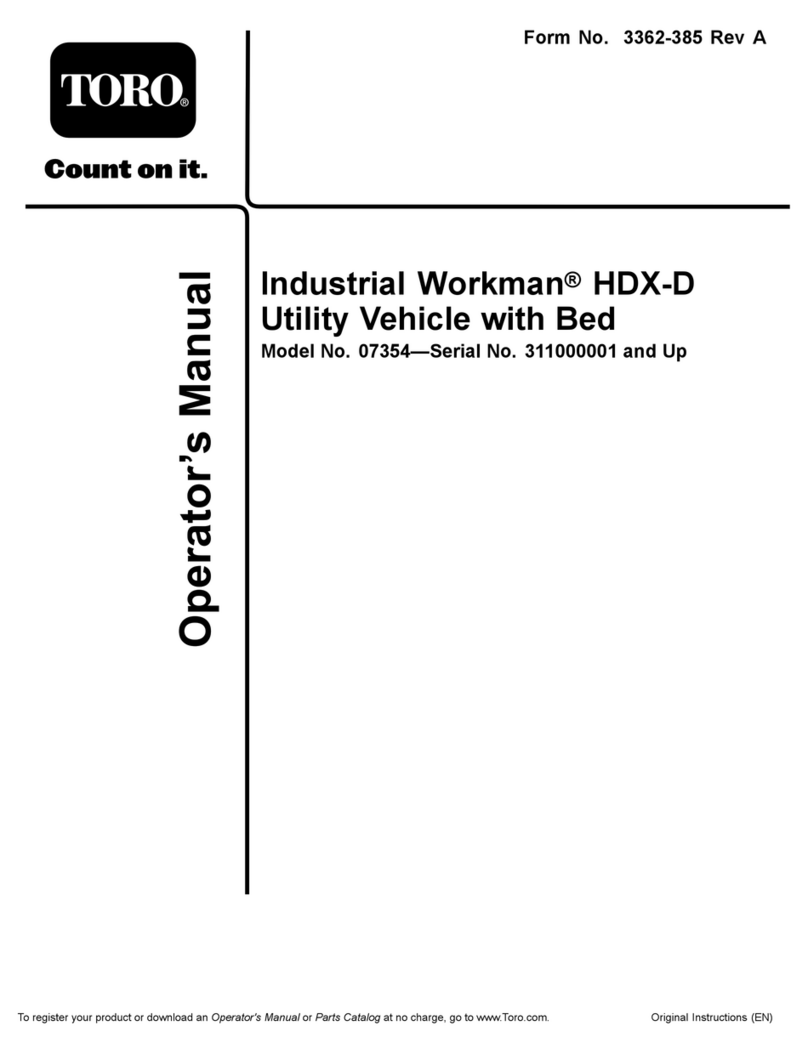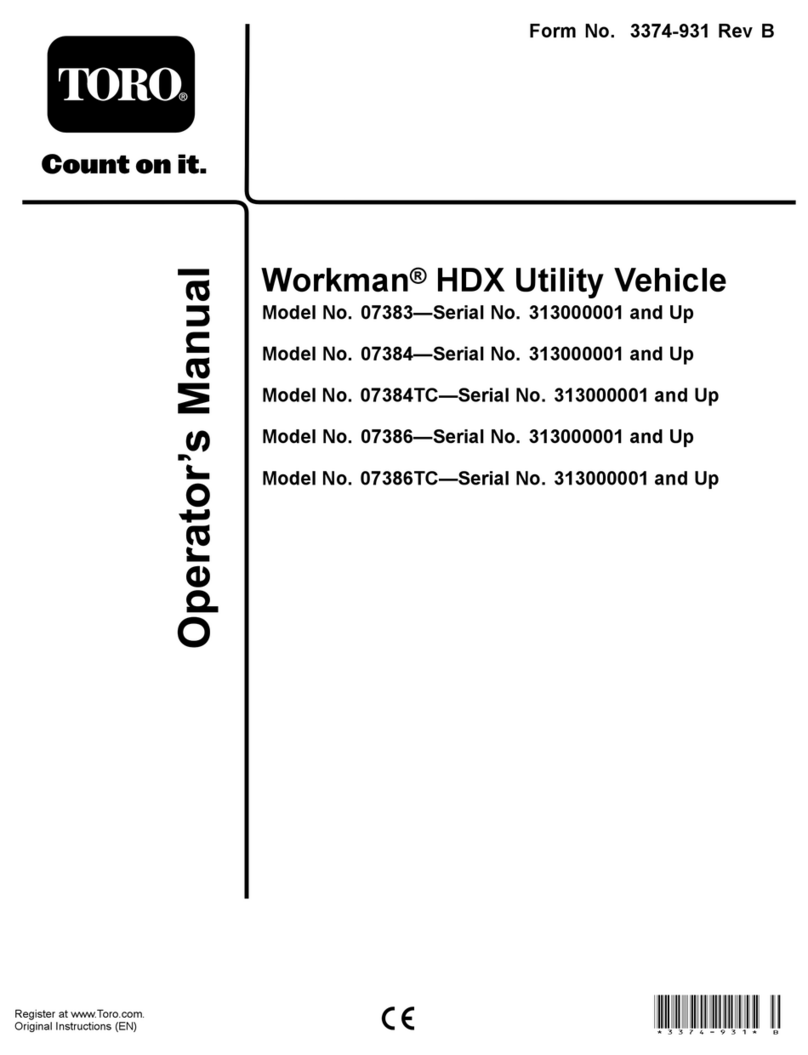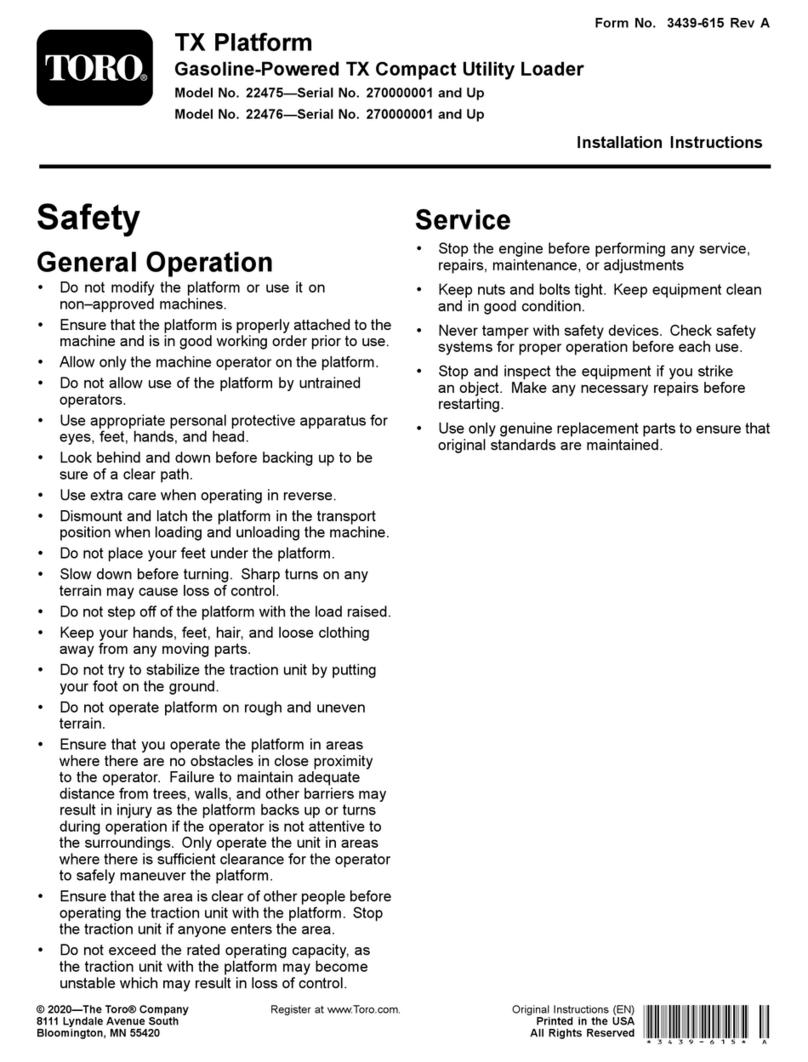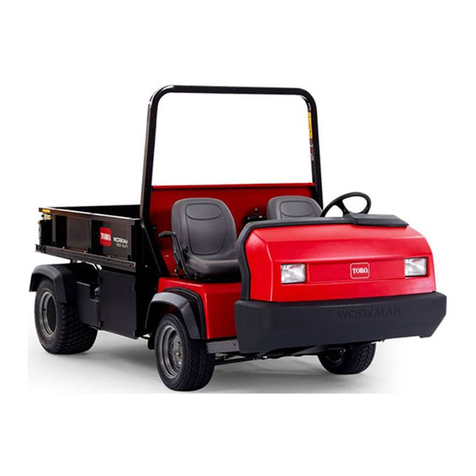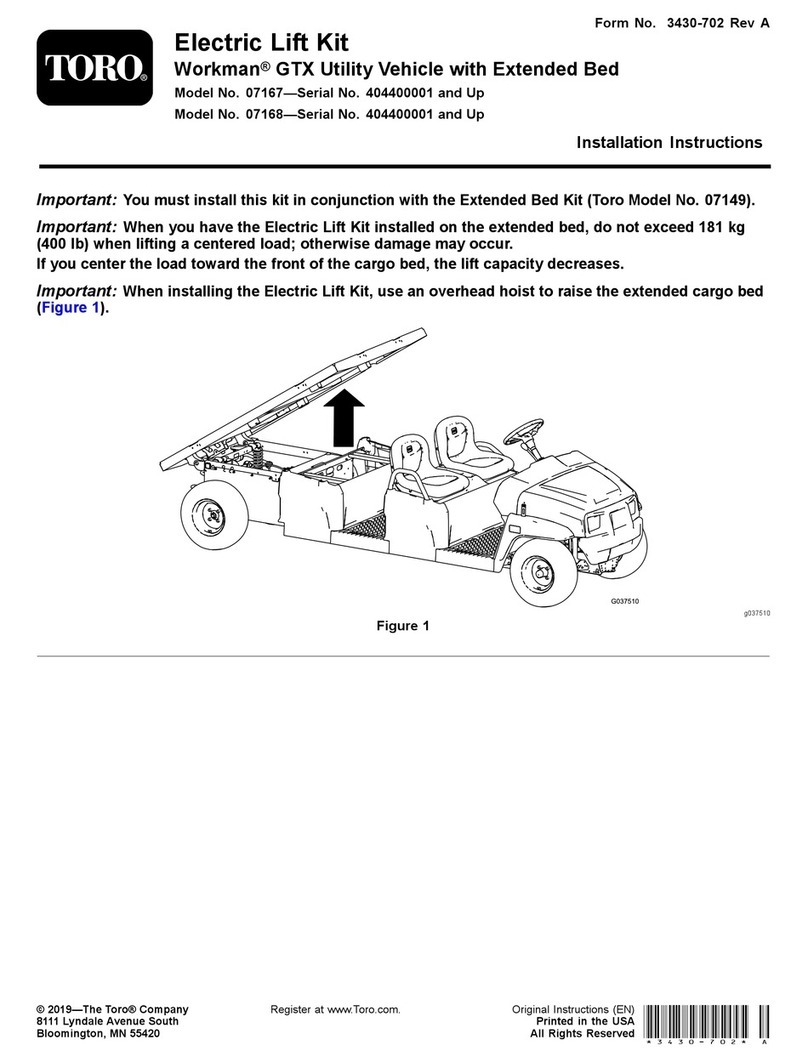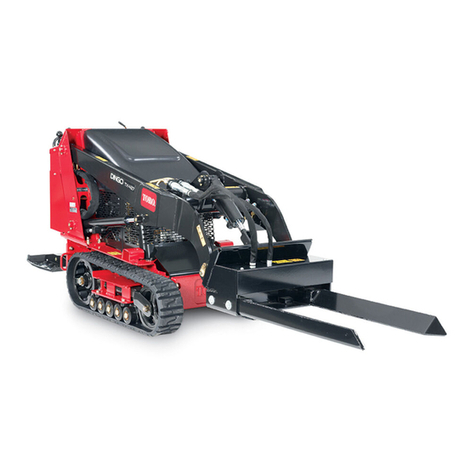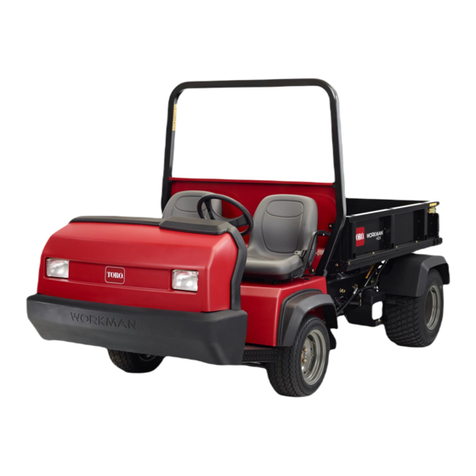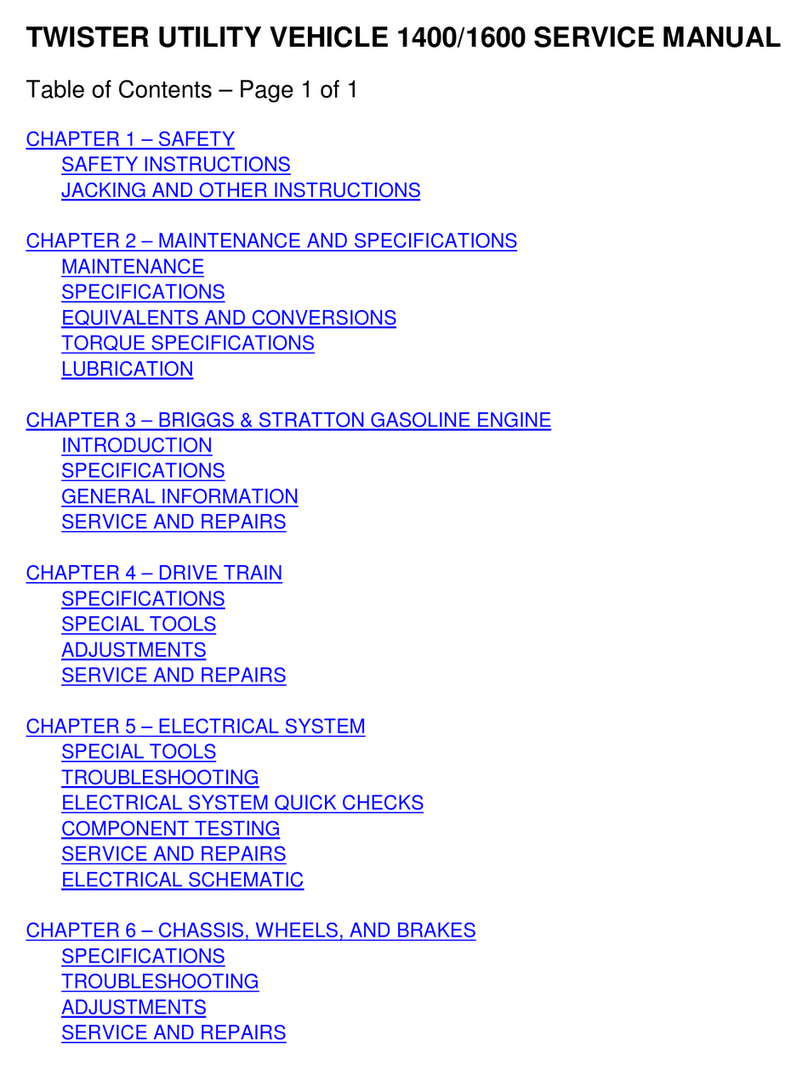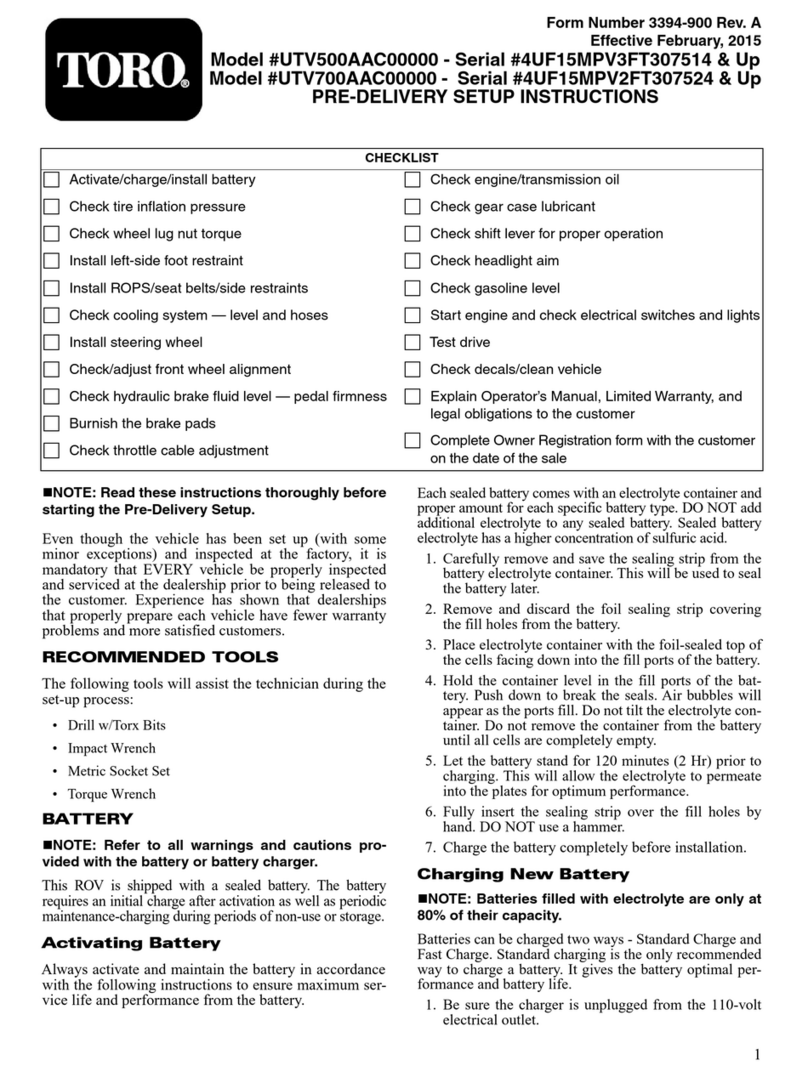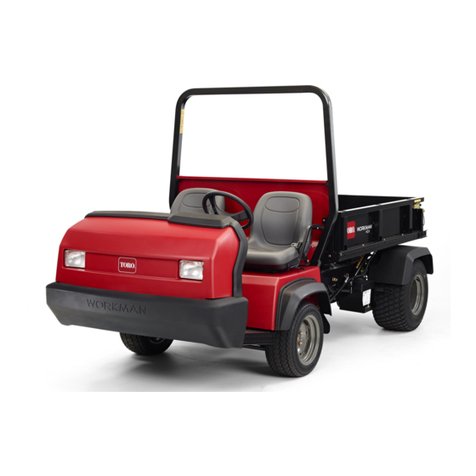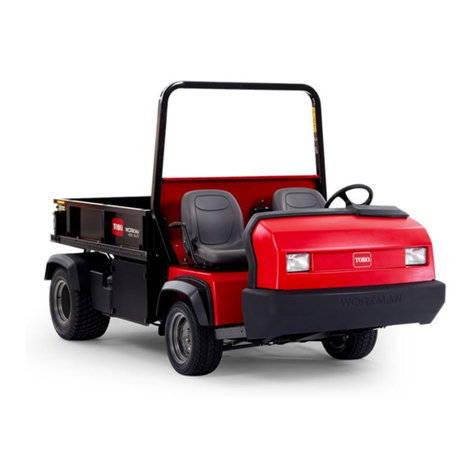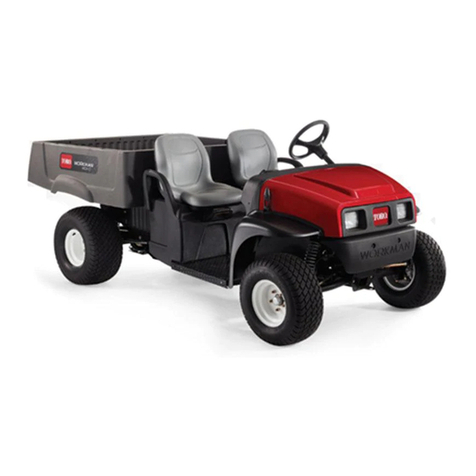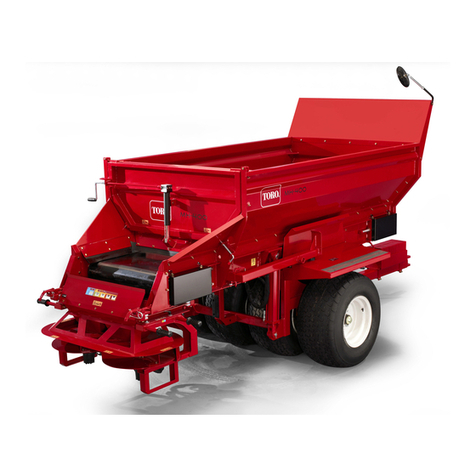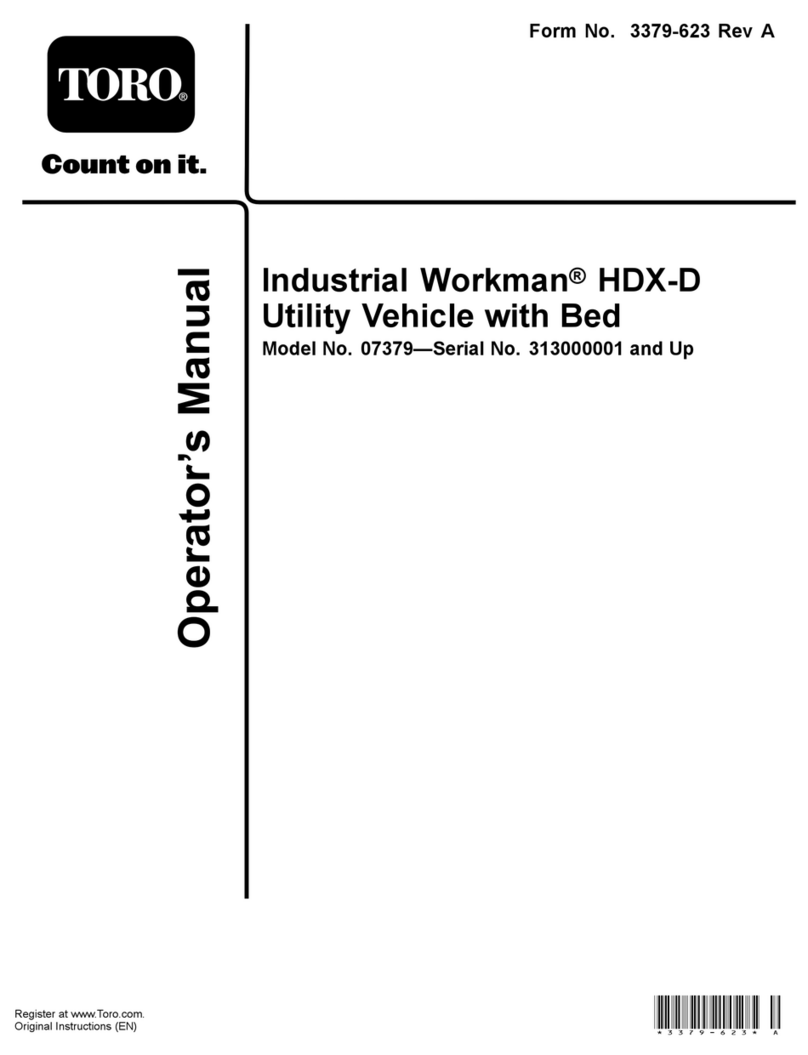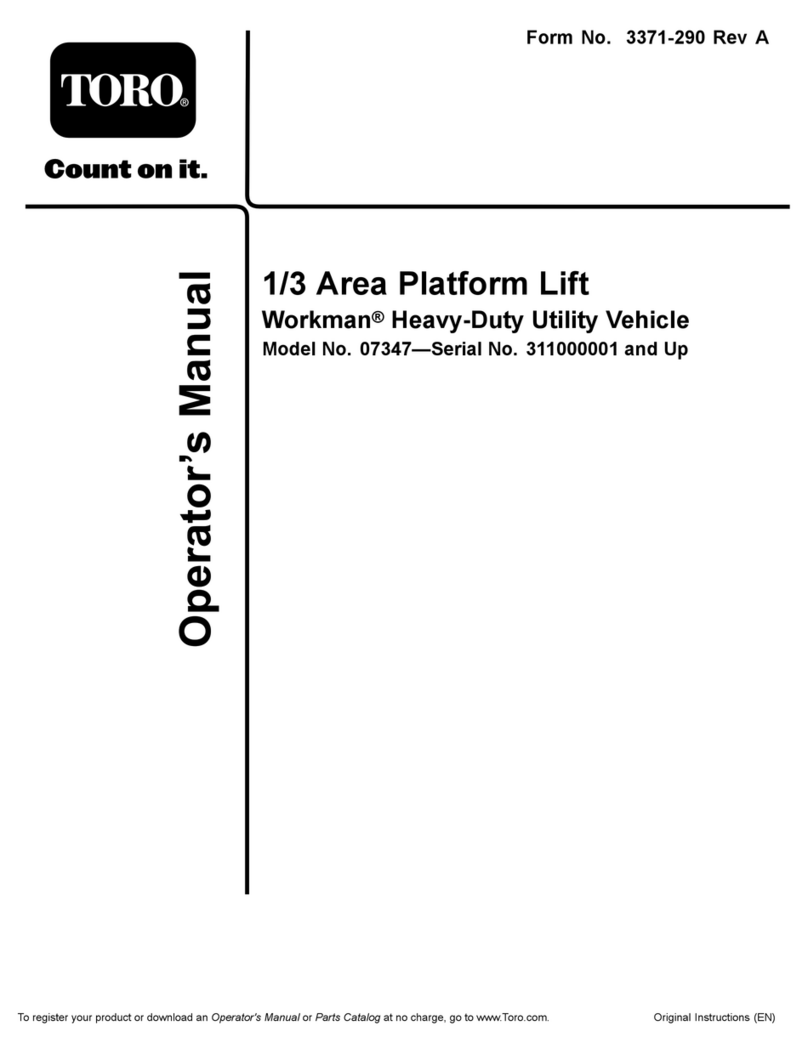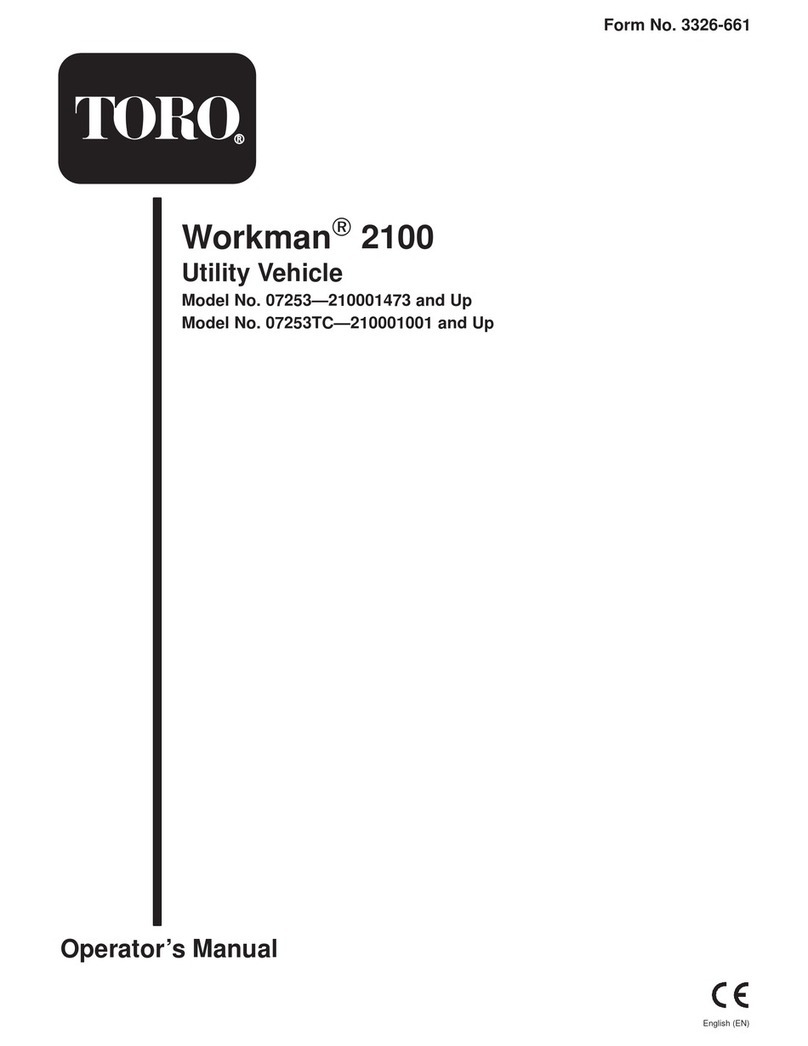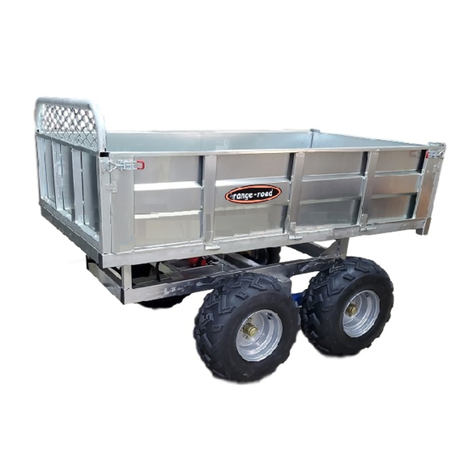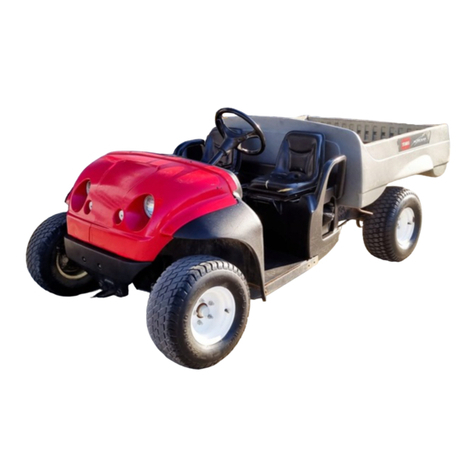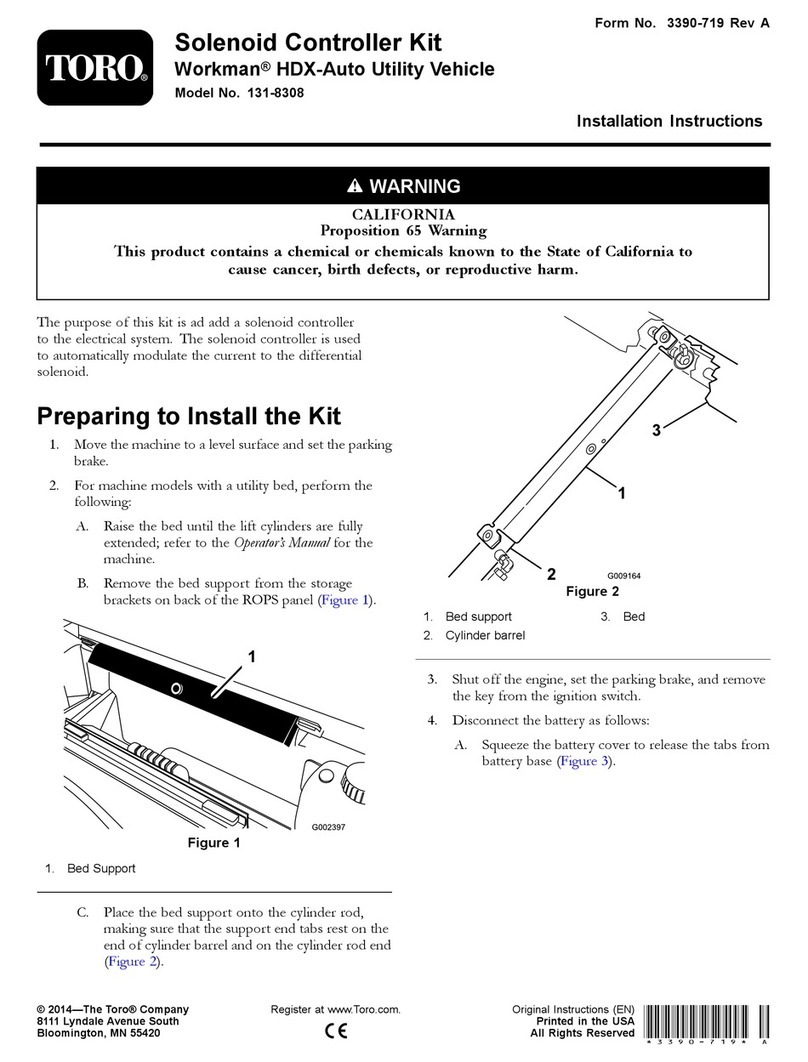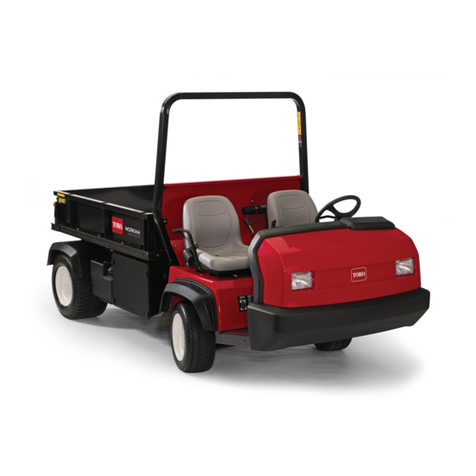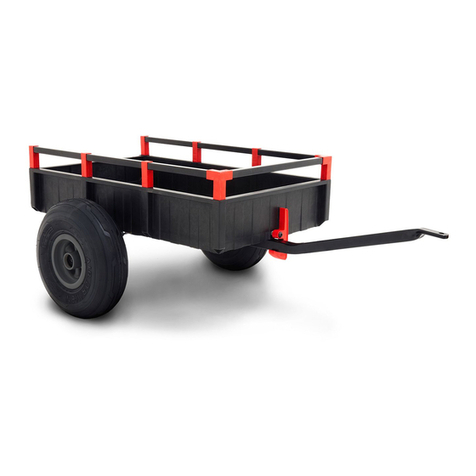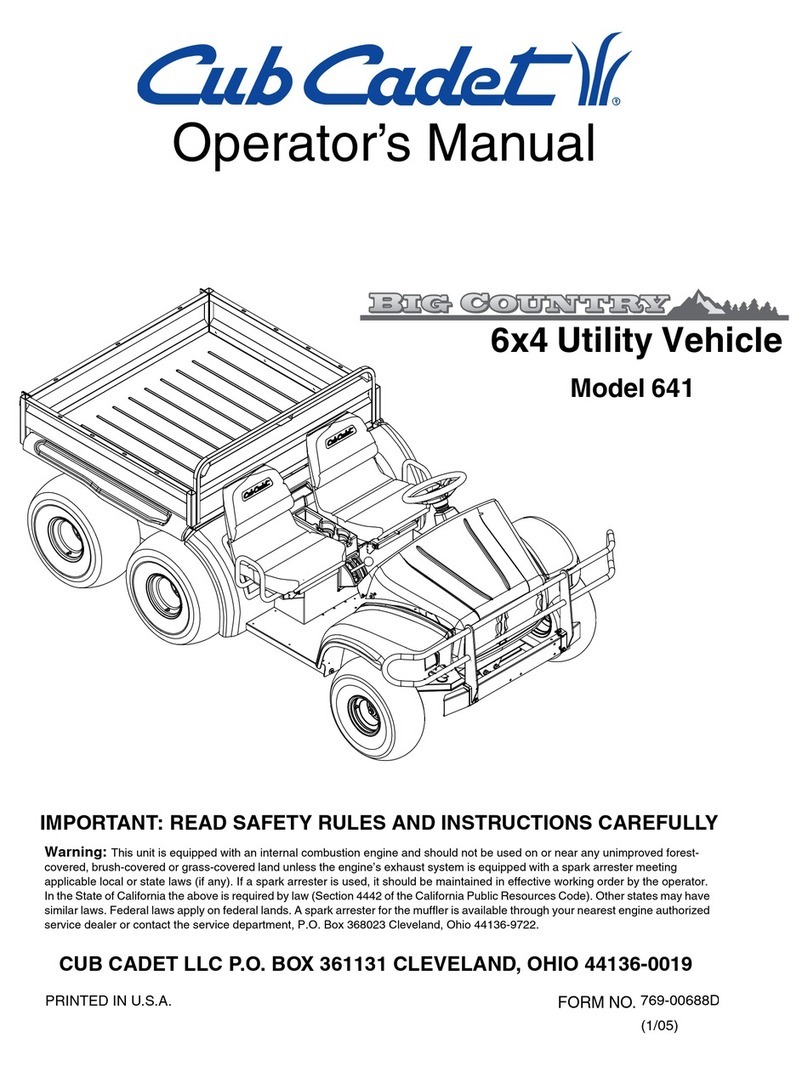
4
•Drive slower and turn less sharply when you are
carrying a passenger. Remember your passenger may
not be expecting you to brake or turn and may not be
ready.
•Always watch out for and avoid low overhangs such as
tree limbs, door jambs, and over-head walkways. Make
sure there is enough room over head to easily clear the
vehicle and your head.
•Failure to operate the vehicle safely may result in an
accident, tip over of the vehicle, and serious injury or
death. Drive carefully.
– Use extreme caution, reduce speed, and maintain a
safe distance around sand traps, ditches, creeks,
ramps, unfamiliar areas, or any areas that have
abrupt changes in ground conditions or elevation.
– Watch for holes or other hidden hazards.
– Use extra caution when operating the vehicle on wet
surfaces, in adverse weather conditions, at higher
speeds, or with a full load. Stopping time and
distance will increase with a full load.
– Avoid sudden stops and starts. Do not go from
reverse to forward or forward to reverse without
first coming to a complete stop.
– Slow down before turning. Do not attempt sharp
turns or abrupt maneuvers or other unsafe driving
actions that may cause a loss of vehicle control.
– When dumping, do not let anyone stand behind the
vehicle and do not dump the load on anyone’s feet.
Release the tailgate latches from the side of the box,
not from behind.
– Only operate the vehicle when the cargo box is
down and latched.
– Before backing up, look to the rear and ensure that
no one is behind you. Back up slowly.
– Watch out for traffic when you are near or crossing
roads. Always yield the right of way to pedestrians
and other vehicles. This vehicle is not designed for
use on streets or highways. Always signal your turns
or stop early enough so that other people know what
you plan to do. Obey all traffic rules and
regulations.
– The electrical system of the vehicle can produce
sparks capable of igniting explosive materials.
Never operate the vehicle in or near an area where
there is dust or fumes in the air which are explosive.
– If you are ever unsure about safe operation, stop
work and ask your supervisor.
•If the vehicle ever vibrates abnormally, stop
immediately, wait for all motion to stop, and inspect the
vehicle for damage. Repair all damage before
commencing operation.
•Before getting off of the seat:
A. Stop the movement of the vehicle.
B. Set the parking brake.
C. Turn the key to Off.
D. Remove the key.
Note: If the vehicle is on an incline, block the wheels after
getting off of the vehicle.
Braking
•Slow down before you approach an obstacle. This gives
you extra time to stop or turn away. Hitting an obstacle
can damage the vehicle and its contents. More
important, it can injure you and your passenger.
•Gross Vehicle Weight (GVW) has a major impact on
your ability to stop and/or turn. Heavy loads and
attachments make a vehicle harder to stop or turn. The
heavier the load, the longer it takes to stop.
•Decrease the vehicle speed if the cargo box has been
removed and there is no attachment on the vehicle. The
braking characteristics change and fast stops may cause
the rear wheels to lock up, which may affect the control
of the vehicle.
•Turf and pavement are slippery when they are wet. It
can take 2 to 4 times as long to stop on wet surfaces as
on dry surfaces. If you drive through standing water
deep enough to get the brakes wet, they will not work
well until they are dry. After driving through water, you
should test the brakes to make sure they work properly.
If they do not, drive slowly while putting light pressure
on the brake pedal. This will dry the brakes out.
Operating on Hills
Operating the vehicle on a hill may cause tipping
or rolling of the vehicle, or the engine may stall
and you could lose headway on the hill. This could
result in personal injury.
•Do not accelerate quickly or slam on the brakes
when backing down a hill, especially with a load.
•If the battery runs out or you lose headway on a
hill, slowly back straight down the hill. Never
attempt to turn the vehicle around.
•Never drive across a steep hill; always drive
straight up or down or go around the hill.
•Avoid turning on a hill.
•Reduce your load and the speed of the vehicle.
•Avoid stopping on hills, especially with a load.
Warning
